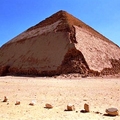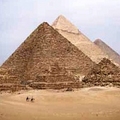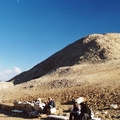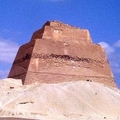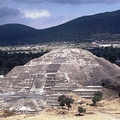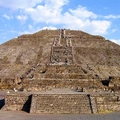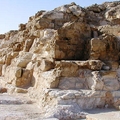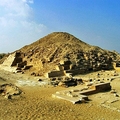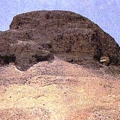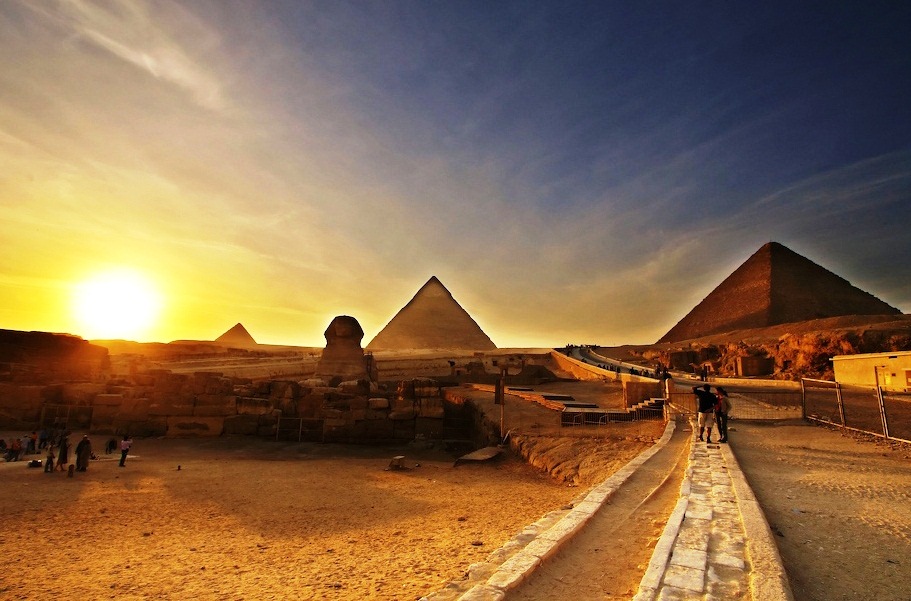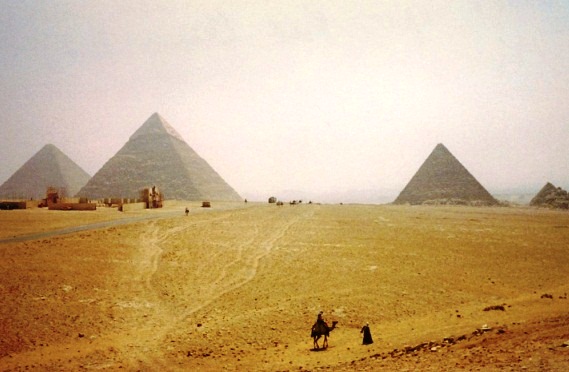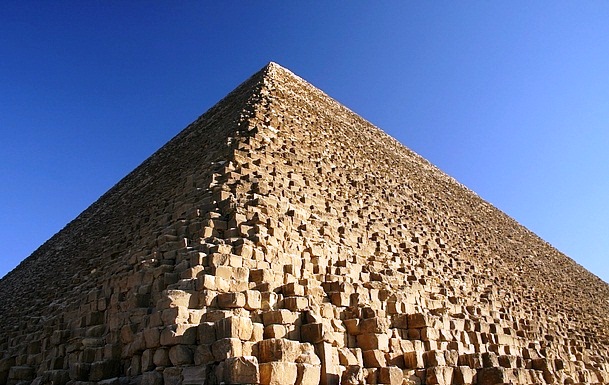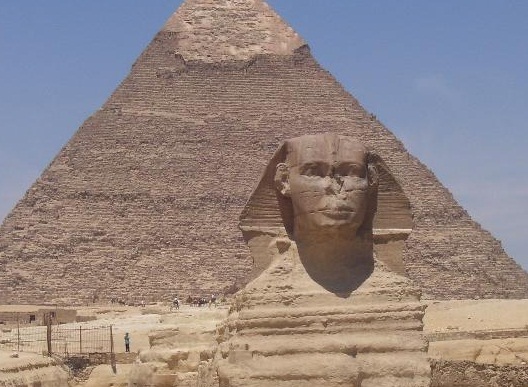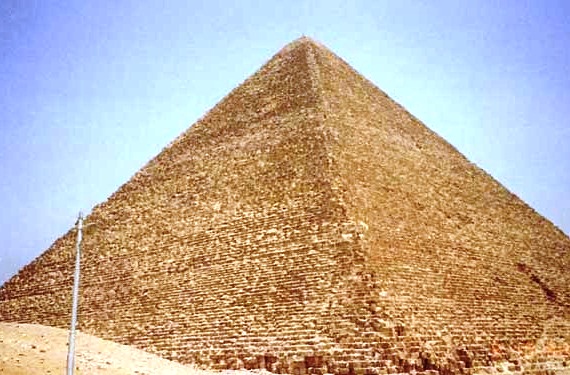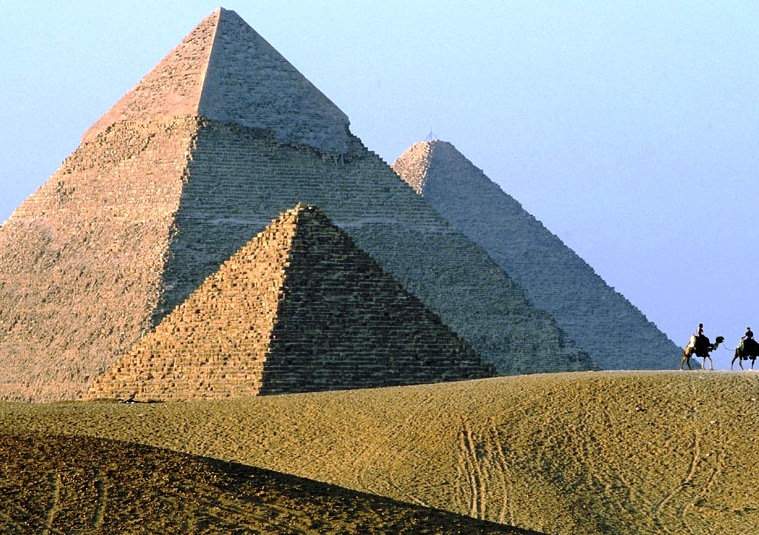World Tourism / The Best Pyramids in the World / The Pyramids of Giza
The Pyramids of Giza
Among the major tourist attractions from the top of the list The Pyramids of Giza can be definitely found. Giza features three main Pyramids , which were founded during the 4th Dynasty, around 2500 B.C. The veritable pyramids of the Ancient Egypt were constructed to be used as tombs for King. It was a unique privilege to have a Pyramid tomb during that period of time. However, this tradition represented only the Old and the Middle Kingdoms.
Nowadays there are more than 93 Pyramids in Egypt, and the most famous and beautiful ones are those at Giza. Those three pyramids at Giza once included an adjoining mortuary temple. The Great Pyramid of Khufu is by far the most remarkable Pyramid in Egypt, the biggest, the tallest, and the most intact one. After the foundation of the pyramid, it was recognised as one of the “Seven Wonders Of The World”, and today, it is the only one of them still remaining. For a long period of time, around 4300 years, the Great Pyramid was also the tallest structure on the earth, until the French Eiffel Tower was built in 1889 and took its place. Khufu’s Pyramid is founded entirely of limestone, and it represents an architectural masterpiece. It contains around 1,300,000 blocks which reach a weight from 2.5 tons to 15 tons, being erected on a square base with sides that measure around 230m, covering 13 acres. Those four sides of the base face the four cardinal points and it has an angle of 52 degrees. The initial height of the Pyramid was 146.5m, while nowadays it reaches only 137 meters in height. Those 9 meters that are missing is because of the theft of the fine quality limestone covering, or even the casing stones, done by the Ottoman Turks in the 15 Century A.D, who constructed houses and Mosques in Cairo.
The tourists will get to see the entrance of the Pyramid that is located at the northern side, like almost every Pyramid in Egypt. On the northern side there are actually 2 entrances, one is original, and it is 17 meters above the ground level, and the other one is a man-made forced entrance located below it. The entrance was founded in the 9th Century A.D by Khalif El-Mamoun, who was looking for some treasures that he thought might have been hidden in the interior of the Pyramid. The treasure seeker sent out stonemasons to make an entrance, and they cut it midway across the centre of the northern side. The formed tunnel runs around 35 meters into the Pyramid, and was crudely cut, and at the end it gets connected with the original inner corridors of the Pyramid. No treasure was found inside, as it was plundered in antiquity.
Nowadays the tourists who come to see the Great Pyramid, use the Mamoun’s entrance to access into the Pyramid, because it is considered to be a shortcut. The Great Pyramid itself is truly an astonishing work of engineering skill.
The Pyramid of Khafre
Khafre's Pyramid can be easily recognisable by the layers of its original casing stones that still stand close to its summit. Due to the fact that it beautifully stands on a higher part of the plateau, it gives the impression that it is taller than the Great Pyramid. This is only an optical illusion, as the pyramid is only 136 meters tall, including its sides of about 214.5 meters, covering a surface area of 11 acres and an angle of 53 degrees. Khafre’s Pyramid has lost some of its initial height during the time, once being 143.5 meters tall. The only common thing with the Great Pyramid is the entrance located in the Northern side as well. There do not exist corridors running into the very heart of this Pyramid, and the burial chamber is founded underground, and a long descending passageway has to be negotiated to reach it. This remarkable entrance is 15 meters above the ground level, leading to the narrow passage, which descends at a 25-degree angle into the large burial chamber. To take in order the weight of the pyramid, the roof of the burial chamber is being created at the same angles as the pyramid face. A large and black sarcophagus can be seen in this room. A lower corridor is found under the upper corridor, and back in time comprised a portcullis that could be lowered to prevent the entry as well as an uncompleted burial chamber, which was cut from the bedrock. Like the upper corridor, this one features a 25-degree slope, then directly levels out, climbs slightly, and finally joins together. The united passageway goes to the burial chamber.
The Pyramid of Menkaure
The son of Khafre, named Menkaure, erected the smallest of the Pyramids on the Giza Plateau. This amazing pyramid was only a mere 65.5 meters tall, while nowadays it has about 62 meters, including its sides that are only 105 meters tall and an angle of 51.3 degrees. Many scientists believe that this Pyramid was altered during its foundation, and made a lot bigger than it originally planned. The original, smaller Pyramid included a simple descending corridor and burial chamber, but when it was expaned, a new corridor with 3 portcullises and a small panelled chamber had been built. Later still, another burial chamber, along with a storeroom were added at a lower level. This Pyramid, like the Great and Khafre’s Pyramid, features a north facing entrance. Apart from the size, Menkaure's Pyramid is different from the other two pyramids at Giza, in the choice of casing stones. While the Pyramids of his father and grandfather were completely cased in fine, white, Turah limestone, this pyramid was partially cased in Turah limestone, from about 15m up. The first 15 metres were cased with pink granite, which was brought from Aswan, the last of which was taken by Muhammad Ali Pasha, who used them to construct his arsenal in Alexandria.
The Great Sphinx
The Great Sphinx, or also known as “Shesib Ankh” or “the living image”, has to be one of the most recognizable constructions in the history. When speaking of the Sphinx it reminds automatically of Egypt and the Giza Plateau. The Sphinx is sculpted from soft sandstone, and many scientists think that it would have disappeared long ago if it was not buried in the sand for so many long periods in its lifetime. The body of the huge structure is 60 meters long and 20 meters tall. Its face is 4 meters wide and the eyes are 2 meters high. It faces the rising sun, and it was revered so much by the ancients, that they decided to built a nice temple in front of it. Today, part of the “uraeus” and the nose are missing, that were not shot off by Napoleon’s men as many believe, but were destroyed by Sa'im Al-Dahr, who was a Sufi fanatic from the Khanqah of Sa'id Al-Su'ada. In 1378, when finding the Egyptian peasants brought almsginvings to the Sphinx in the hope of increasing their harvest, Sa'im Al-Dahr happened to be so outraged that he destroyed the nose. There are displayed small parts of a beard in the Cairo Museum and big one at British Museum in London which actually belongs to the Sphinx, but many Egyptologists deny this. These three pyramids represent a great treasure for the country, and are the best destination for a sacred journey. The huge structures are veiled in mystery and mystics and belong to some eras full of secrets and glorious history.
Others The Best Pyramids in the World .
Maps of The Pyramids of Giza
map EgyptOthers from The Best Pyramids in the World
The Pyramids are as fascinating as they are breathtaking, veiled in mystery and mystics.
There are a lot of ideas and speculations about the construction of the pyramids.
When visiting the pyramids in their chronological order you can be witness to the logical evolution of the pyramid design.
Pyramids were used to be built in Ancient Egypt as tombs, or burial places, for the Egyptian pharaohs, or even kings.
The pyramid appeared because the Ancient Egyptians believed in an after life, so the protection of the bodies of their pharaohs played a great role in the Egyptian’s life.
In order to keep the body of the pharaoh safe, the insides of the pyramids were made like mazes with locked doors and never ending passages.
The best pyramids in the world are of course in Egypt, which seem to be the homeland of these veritable structures.
A journey to the pyramids will reserve unforgettable moments for you, leaving you in a world full of extasy, relaxation and adventure.
If you plan such a journey, then we will recommend the world’s best pyramids to you, so you could be sure what direction to choose.
Enjoy a lifetime experience and you will never be disappointed for choosing pyramids as your holiday destination!!!!


